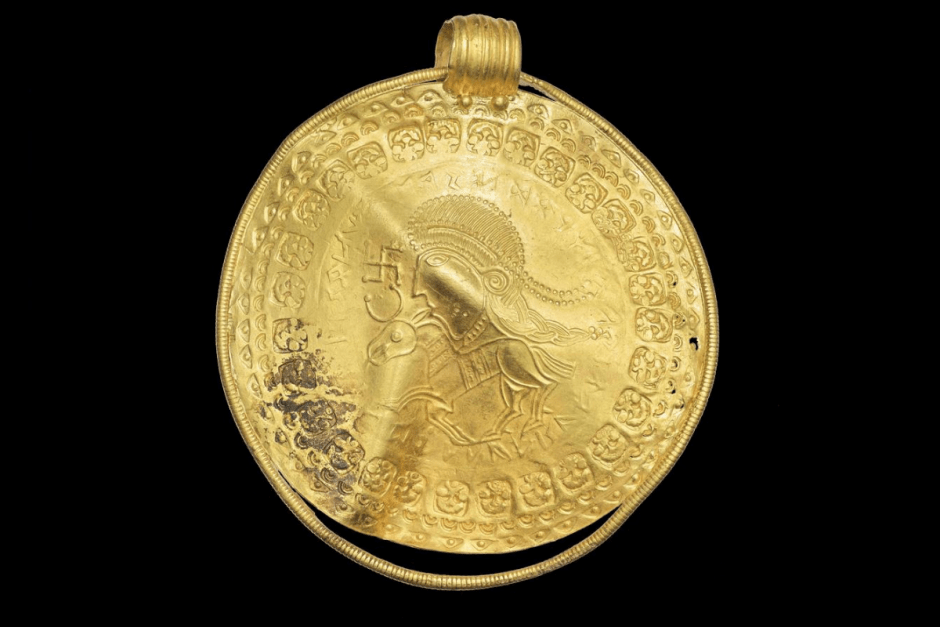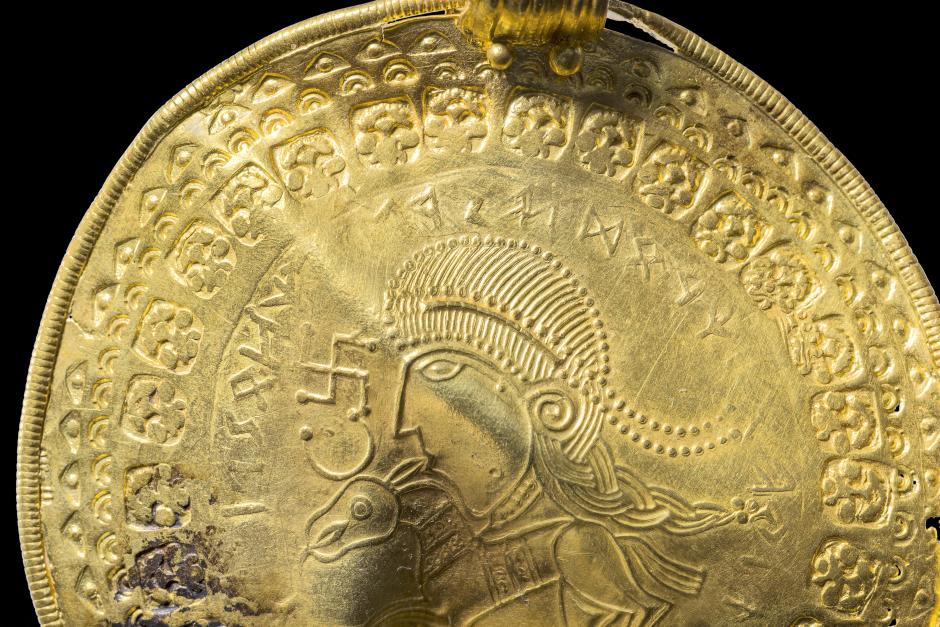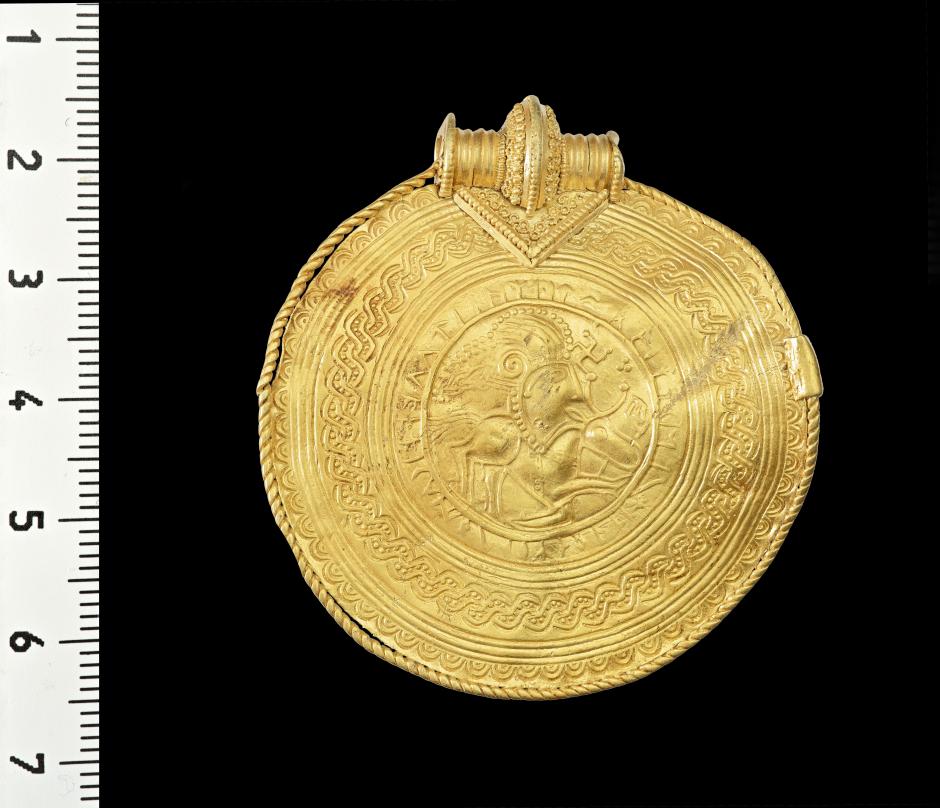
Scientists have identified the earliest known inscription referring to the Norse god Odin on part of a gold disc unearthed in the Vindelev treasure found by two amateur archaeologists in 2020.
One of the largest treasures recently discovered, the Vindelev treasure contains 800 grams of actual gold. Found by two old friends and amateur archaeologists in a field in Jelling, Denmark, the ancient artifacts now reveal secrets from the past and re-write ancient history!
The discovery is crucial because we now have evidence of Norse mythology 150 years earlier than previously – at the start of the 4th century.
The disc discovered in Denmark was including large medallions the size of saucers and Roman coins made into jewelry. It was unearthed in the village of Vindelev, central Jutland, and dubbed the Vindelev Hoard.
Experts believe the cache was buried 1,500 years ago, either to protect it from enemies or to appease the gods.

The motifs of the bracteates were produced in matrices (stamps) of bronze, which were stamped into plates of gold. That way, you could make several bracts with the same motif. The inscription runs from right to left on the bracteate and was originally written from left to right in the matrix. Photo: Arnold Mikkelsen, National Museum, Denmark
Studies of two 1,600-year-old gold medallions that are part of the treasure led to the discovery of very long runic inscriptions in which the name of the supreme god of the Aesir, Odin, appears.
A golden bracteate, a thin, ornamental pendant, bore the inscription “He is Odin’s man,” most likely referring to an unknown king or overlord. On the gold medallion, there is also a portrait of an unknown king or great man, who may have had the (nick)name “Jaga” or “Jagaz,”.
The inscription runs in a circle around the motif of the bracteate, which shows a king’s face seen in profile and with a nice hairstyle. In front of the face are a swastika and a semicircle that perhaps symbolizes the sun and the moon. Under its face stands a four-legged animal, presumably a horse, with a marked harness and something sticking out of its mouth. The horse’s ear points towards the king’s open mouth.
A long inscription appears to have been copied on one of the other pendants on the other gold medallion. It is, however, a poorly executed reproduction.

The long inscription on another bracteate from the Vindelev treasure is a poorly executed copy of the beautifully executed one. Photo: Arnold Mikkelsen, The National Museum of Denmark
This amazing discovery was made by linguist Krister Vasshus from the National Museum in Denmark and runologist and script researcher Lisbeth Imer.
“It’s one of the best-executed runic inscriptions that I have ever seen,” Imer said.
Runes are symbols that were used by early Northern European tribes to communicate in writing.
According to the National Museum in Copenhagen, where the Vindelev Hoard is on display, more than 1,000 bracteates have been discovered in Northern Europe.
SOURCE: https://arkeonews.net








